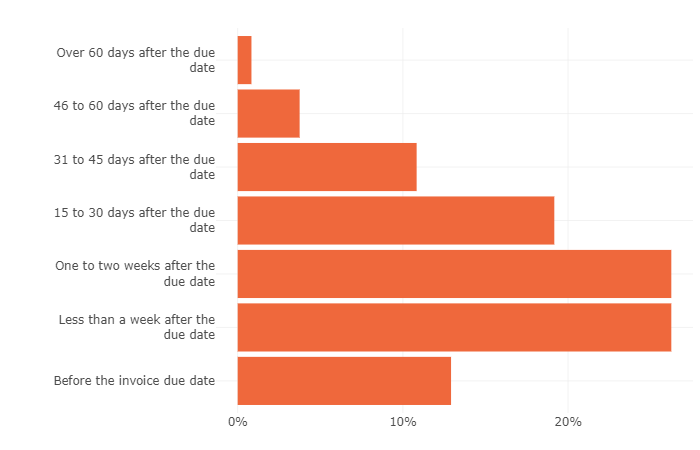Topics:
Mastering DSO: Key to Measuring Accounts Receivable Performance
Posted on March 22, 2023
Written By
Siddharth Sujan

As a finance leader, managing accounts receivable (AR) is critical for maintaining a healthy cash flow and overall business profitability. To gauge the effectiveness of their receivables, finance teams often rely on metrics that help measure AR performance.
One such metric that can make or break the financial health of any organization is Days Sales Outstanding (DSO). In this article, we will delve into the various aspects of this crucial metric and explore its significance in measuring the accounts receivable performance of finance teams.
What is Days Sales Outstanding (DSO)?
DSO is the average number of days a company’s accounts receivables remain outstanding before they are converted into cash. In other words, it shows how long it takes for a company to turn its AR into cash. The higher the DSO, the lesser the amount of cash flow; the lower the DSO, the more the cash flow.
DSO is one of the several metrics used to measure AR performance. Other commonly used AR metrics include Average Days Delinquent, Collective Effectiveness Index, and Bad Debt to Sales Ratio. However, DSO is the most widely used metric as it is easy to calculate and provides a quick snapshot of a company’s AR performance.
How to Calculate DSO?
To calculate DSO, divide the accounts receivable balance by the average daily sales. Here is the formula:
DSO = (Accounts Receivable/Total Credit Sales) x Number of Days in the Period
Let us take an example to understand this better. Suppose a company has an accounts receivable balance of $100,000 and its total credit sales for the period were $500,000. The period for which we want to calculate DSO is 30 days.
First, we need to calculate the average daily sales by dividing the total credit sales by the number of days in the period:
Average Daily Sales = Total Credit Sales / Number of Days in the Period
= $500,000 / 30
= $16,667
Next, we can use the formula above to calculate the DSO:
DSO = (Accounts Receivable/Total Credit Sales) x Number of Days in the Period
= ($100,000 / $500,000) x 30
= 6 days
Therefore, the company’s DSO is 6 days, which means it takes an average of 6 days for the company to collect payment from its customers after a sale is made.
Why is DSO Important in Measuring Accounts Receivable Performance?
As businesses strive for growth and financial stability, staying on top of receivables becomes increasingly important. In this regard, Days Sales Outstanding (DSO) is a crucial metric that finance leaders must measure to assess their company’s AR performance.

Let us delve deeper to understand the importance of DSO and how it can help finance executives optimize their company’s financial health.
- INDICATOR OF CASH FLOW MANAGEMENT: DSO is quite simply, the best indicator of a company’s ability to manage its cash inflow. A low DSO indicates that the accounts receivable department is functioning efficiently, while a higher DSO means that the business is not collecting payments as proactively as it should, which in turn could hamper the overall cash flow.
- IDENTIFIER FOR CASH FLOW PROBLEMS: A high DSO also indicates that a company is facing potential cash flow problems, such as customers delaying payment or a slowdown in sales. By keeping an eye on DSO, finance executives can take proactive measures to identify and address any underlying issues hampering cash flow.
- ENABLER OF INDUSTRY STANDARDS BENCHMARKING: Many forward-looking finance leaders also rely on DSO to benchmark their company’s AR performance against industry standards. By comparing DSO to similar companies in the industry, finance executives can identify areas where the company is performing well and where improvements can be made.
- PROVIDER OF COLLECTION POLICIES’ INSIGHTS: Companies often don’t realize that DSO can provide valuable insights into their credit and collection policies. For instance, if a company’s DSO is high, it could mean that they need to enhance their credit evaluation process or improve their collection efforts. By utilizing this information, finance executives can refine their credit and collection policies and improve the overall efficiency of their AR management.
- INFLUENCER FOR FINANCIAL REPORTING: Finally, DSO can also significantly impact a company’s financial reporting. For instance, a high DSO can lead to an overstatement of revenue, while a low DSO can lead to an understatement of revenue. Hence, finance executives must monitor DSO to ensure their financial reporting accurately reflects the company’s performance and financial position.
What are the Factors Affecting DSO?
By understanding the various factors that can influence DSO, finance executives can pinpoint areas that require improvement and take necessary steps to further enhance their AR management processes. There are several factors that can affect DSO, including:
- INDUSTRY NORMS: First & foremost, industry norms can have a direct impact on the DSO of an organization. Some industries have longer payment cycles, which can result in higher DSO. Finance executives should compare their DSO with industry benchmarks to identify improvement areas and ensure they are keeping up with industry norms.

- CUSTOMER PAYMENT BEHAVIOUR: Customer payment behavior is another significant factor affecting DSO. If a company’s customer consistently pay on time, the DSO will be low. However, if the customers are accustomed to delaying payments, the DSO will be high, which could lead to potential cash flow problems for the company. Finance executives must monitor payment behavior and work with them to resolve any payment-related issues.
- ECONOMIC CONDITIONS:When times get tough financially, customers may find it hard to make timely payments, and as a result, DSO can increase, making it difficult for day-to-day operations. That’s why finance executives need to be mindful of how economic conditions could impact their organization’s DSO and take proactive steps to minimize any negative effects.
- COLLECTION POLICIES & SALES TERMS: Companies with strict credit and collection policies tend to have lower DSO, as they can collect payments more quickly. Additionally, companies that offer shorter payment periods and early payment discounts may have a lower DSO. Therefore, finance executives should regularly review and refine their credit policies and sales terms to ensure they are efficient and effective.
- SEASONAL TRENDS: Seasonal trends can also go a long way in impacting a company’s DSO. For example, companies in the retail industry may experience higher DSO during the holiday season due to an increase in sales. While this may seem like a positive sign for the business, finance executives need to anticipate and plan for such seasonal trends to ensure that they have the necessary cash flow to manage operations, even during times of increased sales.
How to Reduce DSO?
While reducing DSO in itself can be a mammoth task for any executive, finance teams can implement certain best practices that can help achieve healthier cash flow in the long run. Some of these tips are:
- Tighten Credit Policies: Implementing stricter credit policies can help reduce the number of late payments and improve DSO. This can involve screening customers more thoroughly before offering credit and setting clear credit terms, such as requiring partial payments upfront.
- Invoice Promptly and Accurately: Timely and accurate invoicing can help ensure customers pay promptly. Consider automating the invoicing process to further reduce errors and delays.
- Encourage Early Payments: Offering discounts or other incentives for early payment can encourage customers to pay promptly, thereby reducing DSO.
- Follow-up on Overdue Payments: Promptly following up on overdue payments can help prevent late payments from becoming bad debts. Consider implementing a system for regular follow-ups, such as sending automated reminders or calling customers directly.
- Improve collections processes: Streamlining and improving collections processes, such as optimizing collection strategies, can help reduce DSO by accelerating the collection of outstanding debts. This can include implementing an automated collection software or outsourcing collections to a third-party provider.
RELATED CASE STUDY: A leading recruitment agency wanted to streamline receivables, build a plug-and-play model to easily integrate services for newly acquired brands and bring down operating costs. Read the case study to learn how QX worked closely with the client to reduce DSO through an offshore team of receivables experts.
QX Global Group: Helping Businesses Optimize Receivables
QX Global Group is a global Business Process Management (BPM) company offering comprehensive back-office services to businesses across industries. QX allows businesses to work with a highly skilled team of collection experts, implement AR best practices and leverage the latest collection technology to ensure that you get paid on time, every time.
Our end-to-end O2C services have helped businesses across industries & geographies optimize AR management and bring down DSOs significantly. We also use analytics to provide custom data & insights, ensuring our clients are always on top of their collections. Schedule a free, no-obligation call with our experts to kickstart your accounts receivable transformation journey.
Originally published Mar 22, 2023 11:03:29, updated Mar 22 2023
Topics:








